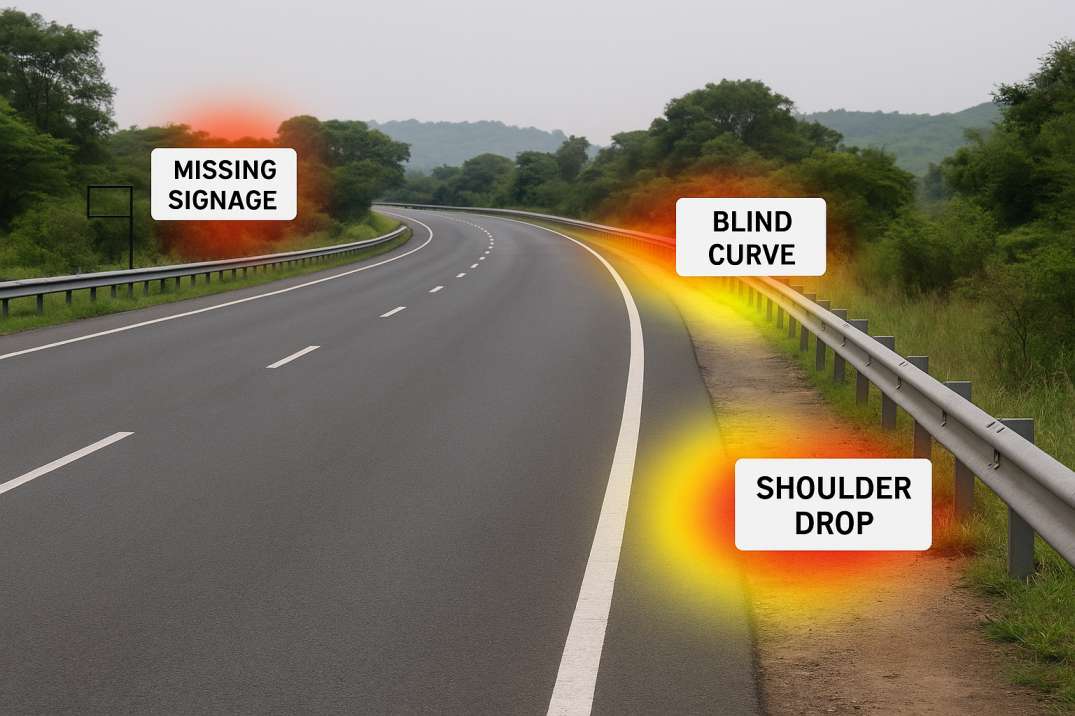Contact Us
RoadVision AI
Private Limited
Office No. 308 & 310, B Block
Ansal Chamber - 1, Bhikaji Cama Place,
Near Engineers India Limited (EIL) Bhawan, New Delhi - 110066
© 2024 | RoadVision AI | All rights reserved
Road safety audits (RSAs) are systematic evaluations of road infrastructure, aimed at identifying safety risks and minimizing crash potential. In India, these audits are governed by the IRC SP:50 standard issued by the Indian Roads Congress. This document provides a framework for conducting RSAs across all stages of road development and plays a crucial role in road asset management.
With increasing traffic loads, complex intersections, and rising road crash statistics, RSA has become indispensable for ensuring that road designs are not just functional, but also safe for all users. This guide covers everything from the stages of RSA to how modern tools like AI-based platforms can streamline the process.

IRC SP:50 is the official guideline for road safety audits in India, published by the Indian Roads Congress. It defines:
These audits are applicable across National Highways (NH), State Highways (SH), and Urban Roads, making IRC SP:50 an essential reference for civil engineers, planners, and road safety consultants.
Road asset management isn’t just about road conditions and budgeting; it also includes safety performance. RSAs help:
When integrated with digital road inventory tools, audits also contribute to structured, data-driven maintenance strategies.
IRC SP:50 outlines five distinct RSA stages, each targeting specific phases of a road project:
Following IRC SP:50, here is a simplified, step-by-step road safety audit procedure in India:
Traditional audits can be slow, subjective, and inconsistent. AI-based platforms like RoadVision AI help by:
Explore a real-world example in our case studies section.
The IRC SP:50-based road safety audit procedure ensures safer, more compliant roads when performed correctly. By integrating RSA into your road asset management plan and adopting digital tools like RoadVision AI, you improve road design, reduce crashes, and save time and cost.
RoadVision AI is transforming road infrastructure development and maintenance with its innovative AI in road maintenance and AI in road construction solutions. By utilizing cutting-edge computer vision technology and digital twin models, the platform conducts comprehensive road safety audits, enabling the early detection of potholes, cracks, and other surface issues for timely repairs and enhanced road conditions. The use of AI in road safety also extends to traffic surveys, providing data-driven insights to tackle challenges like traffic congestion and optimize road usage. Focused on building smart roads, RoadVision AI ensures full compliance with IRC Codes, empowering engineers and stakeholders to reduce costs, minimize risks, and elevate road safety and transportation efficiency.
Ready to go beyond manual audits?
Book a demo with us to see how RoadVision AI transforms your RSA process.
Q1. What is the purpose of IRC SP:50?
IRC SP:50 provides standard guidelines for conducting road safety audits in India to minimize risks and improve road safety.
Q2. How many stages are there in an RSA as per IRC SP:50?
There are five stages: Feasibility, Preliminary Design, Detailed Design, Construction, and Post-Opening.
Q3. Can RoadVision AI help with IRC-compliant road audits?
Yes, RoadVision AI delivers audit-ready reports, GPS-based defect mapping, and RSA insights fully aligned with IRC SP:50.